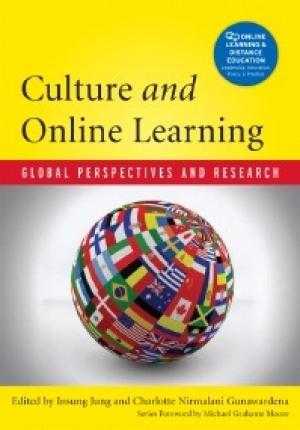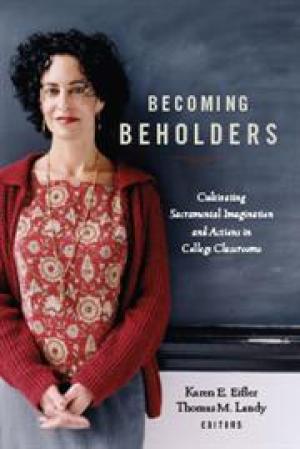Resources by Michael Willett Newheart

This helpful collection of seventeen essays addresses two important concerns within religious and theological studies: culture and online learning. Scholars of religion are giving increasing consideration to culture. (A search of Amazon for books on “religion and culture” yielded a hundred pages of “hits.” The first four books were simply entitled Religion and Culture.) Furthermore, more and more courses in religion and theology are offered online. Surprisingly, little research has been done in culture and online learning, and this book seeks to address this lack. Authors in this collection hail from Europe, North and South America, Asia, and Australia. (Unfortunately, none are from Africa.) The book appears as the third in a series, Online Learning and Distance Education. Editors Jung (from Japan) and Gunawardena (from Sri Lanka, teaching in the U.S.) write solely or collaboratively in eleven of the seven essays. The essays are grouped around eight themes: (1) learners, learning, and learner support, (2) non-native speakers, (3) facilitating learning, mentoring, and professional development, (4) learning design, identity, gender, and technology, (5) visual culture, (6) leadership, (7) quality, and (8) research. Many of the authors wrestle with a definition of culture. In the first essay, “Perspectives on Culture and Online Learning,” the editors write, “Culture impacts every facet of online learning, from course to interface design, to communication in a socio-cultural space, and to the negotiation of meaning and social construction of knowledge; thus a definition of culture that is flexible, dynamic, and negotiable is more appropriate to understand the online learning context” (1). Interesting insights are scattered through this collection. In “Online Identity and Interaction,” Gunawardena notes that students from Sri Lanka and Morocco “look to the online medium as a liberating environment that equalizes status differences” (35). In “Emerging Visual Culture in Online Learning Environments,” Ilju Rha (South Korea) urges online educators to integrate more visuals in their online courses. In “Accounting for Culture in Instructional Design,” Gunawardena, Casey Frechette (US), and Lumila Layne (Venezuela) introduce the Wisdom Communities instructional design model (WisCom), which “was developed to inform the design of collaborative online learning experiences” (57). (For more about WisCom, see https://prezi.com/1unppl6dh2a-/new-model-new-strategiesinstructional-design-for-buildingonline-wisdom-communities/.) In “Transformative Learning through Cultural Exchanges in Online Foreign Language Teaching,” Kerrin Ann Barrett (US) includes tips for instructors, such as “remember to breathe,” and tips for learners, such as “show your creative side in activities (asynchronous and synchronous)” (146). In “International Interpretations of Icons and Images Used in North American Academic Websites,” Eliot Knight (US), Gunawardena, Elena Barberà (Spain), and Cengiz Hakan Aydin (Turkey) write, “Many of the images and icons used in online environments depend on the meanings, concepts, metaphors, objects, and so on that are bound to the particular cultural context in which they were designed” (149). Just as neither religion nor culture is monolithic, neither is online learning. This stimulating collection from around the world will help online teachers to negotiate better the various cultural divides and thus offer our students better online learning experiences.

This thought-provoking, insightful collection of twenty articles is directed toward teachers at Catholic colleges, but it is applicable to anyone who teaches in higher education and who comes to that task from a faith perspective. A wide variety of disciplines are represented, including art, literature, writing, chemistry, math, economics, sociology, communication, history, Spanish, and, of course, religion. The book’s title and subtitle are suggestive. The title derives from a Hopkins poem, “Hurrahing in Harvest”: “These things, these things were here and but the beholder / Wanting” (xii). “Sacramental imagination” in the subtitle is described as “a deeply Catholic perspective on the world, one that sees God manifest throughout the natural, created world” (ix). This perspective is cultivated through “Actions in College Classrooms.” The authors therefore discuss in detail activities in courses that they have taught that relate to the topic of the book. They often quote from students’ journals or essays as a means of demonstrating student learning. They also describe activities that go on outside the classroom, such as trips to museums, personal reflection during the week, and service with nonprofit agencies as additional ways by which the sacramental imagination is cultivated. Several of these essays have appeared elsewhere, some in publications related to Collegium, a Catholic organization that describes itself as “a colloquy on faith and intellectual life”. (Indeed, the book is featured prominently on the group’s webpage.) The organization, Contemplative Mind in Society, is mentioned, as is the work of Parker Palmer. One, then, could see this book as part of a larger conversation about spirituality and education. Here a Catholic perspective on higher education is brought to bear. Incidentally, two authors have Wabash connections: Angela Kim Harkins was a Wabash fellow, and Anita Houck acknowledges a Wabash colloquy. The title of their essays are both representative: Houck’s “You Are Here: Engagement, Spirituality, and Slow Teaching,” and Harkins’ “Cultivating Empathy and Mindfulness: Religious Praxis.” Other interesting titles (and topics) include economist Peter Alonzi’s “Pauses,” English professor Melissa A. Goldthwaite’s “Rhetorics of Silence: A Pedagogy of Contemplation, Empathy, and Action,” and communications professor Jonathan M. Bowman’s “Mutual Benefice: Helping Students Find God in a Research Methods Course.” Readers of this resource might be tempted to read only the articles written by professors of theology or religious studies. That approach might be a good entry point to the book, but the treat is to see how teachers in various disciplines are cultivating sacramental imagination in their classrooms. A particularly intriguing example was Stephanie Anne Salomone’s use of a “This I Believe” essay in a geometry course, thus “Linking the Mathematical Axiomatic Method with Personal Belief Systems.” The concluding sentence of the book was fitting and invites reflection. Jonathan M. Bowman writes, “I have reinvigorated my own experience of transcendence as I teach and mentor my undergraduate students” (313). Reading this book – and pondering its implications for our teaching – can help us too “become beholders.”